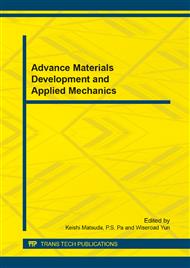p.502
p.507
p.515
p.521
p.525
p.531
p.535
p.540
p.544
A Variable Proportional Valve Braking Force Distribution Strategy Including SOC Constraints of Electric Vehicles
Abstract:
Braking force distribution plays an important role in energy recovery of electric vehicles. A new braking force distribution based on the variable proportional valve is proposed to solve the traditional proportional valve braking force distribution problem. By considering the safety brake force distribution area, the variable proportional valve friction braking force distribution line is optimized, the regenerative braking force equations are deduced using the optimized friction braking force distribution line at different braking intensity, then the regenerative braking force is corrected by considering mechanical characteristics of motor and SOC of battery constraints. Simulation results show that the proposed regenerative braking energy recovery has been significantly improved.
Info:
Periodical:
Pages:
525-530
Citation:
Online since:
July 2014
Authors:
Price:
Сopyright:
© 2014 Trans Tech Publications Ltd. All Rights Reserved
Share:
Citation:


